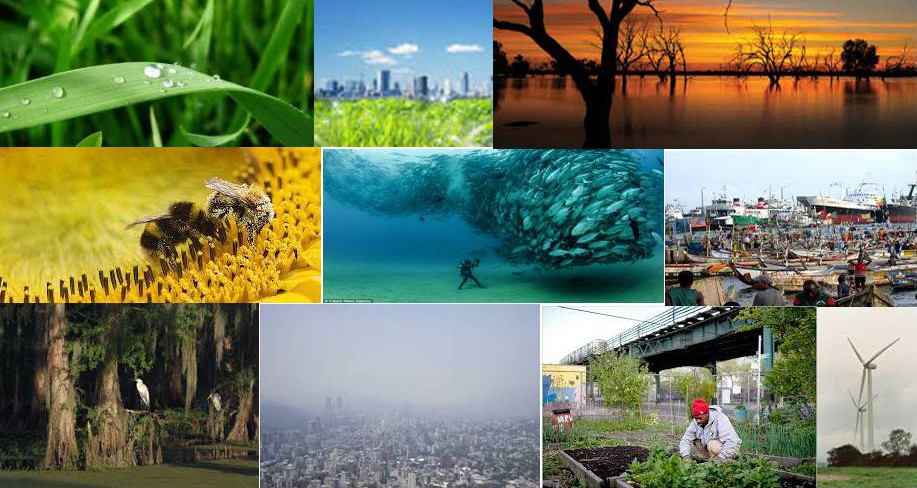First draft of annotated bibliography is due Wed. Nov. 2 following the format reviewed in class. The format and instructions are posted in the link below.
annotated-bibliography-assignment
First draft of research summary is due Wed. Nov. 16. (1 to 1 and 1/2 pages). The format for organizing the summary is included in the link below.
final-one-page-research-summary-1
Econ 2505 Group Projects for Semester Research Project and/or Emerging/Honors Scholars Program
These are suggested projects for group collaboration on data collection, place-based visits (primary research), secondary research for the semester research project.
These might also serve as proposals for student collaboration and participation in the Emerging/Honors Scholars Poster Presentation Program in November
- What are food deserts? Mapping the location of food deserts in a Brooklyn neighborhood.
How is the issue of food deserts an environmental issue as well as an economic one?
Reading:
- Kristian Larsen and Jason Gilliland, A Farmers’ market in a food desert: Evaluating impacts on the price and Availability of healthy food, Health &Place15 (2009)1158–1162 Elsevier
- Renee E.Walker a,b,n, Christopher R.Keane a, JessicaG.Burke. Disparities and access to healthy food in the United States: A review of food deserts literature, Health & Place16(2010)876–884
3) Cynthia Gordon, MarniePurciel-Hill, NirupaR.Ghai, LeslieKaufman, ReginaGraham, and Gretchen Van Wye. Measuring food deserts in New York City’s low-income neighborhoods, Health & Place 17 (2011)696–700
What are the characteristics of the communities in and around food deserts? Economic/median family income
- Health statistics (ex., rates of diabetes, heart disease, high blood pressure, etc.?)
- How can the economic costs to the larger economy in terms of health care costs be measured?
- What is the median distance to sources of fresh fruit and vegetables?
- What are the needs in such communities? How can access to more healthy alternatives be achieved? Can City government have a role here in providing incentives to small businesses to locate in and provide access to healthy alternatives?
- Educational information and outreach on the health benefits of healthy choices
- What are the environmental and economic costs and benefits of renewable vs. fossil fuel based energy sources?
Reading:
- Union of Concerned Scientists, Benefits of Renewable Energy Use
Daniel Cusick. Fossil Fuel Subsidies Cost $5 Trillion Annually and Worsen Pollution
The International Monetary Fund notes that subsides for burning fossil fuels enrich the wealthy and make air pollution worse, Scientific American, May 19, 2015
- Environment America, Report: The High Cost of Fossil Fuels, June 30, 2009
- Define a geographic area within which to focus this study (A city? Part of the city? State? U.S.?)
- Think about a methodology for measuring the costs and benefits of each source within a given geographic area.
- Review some studies that have already been done and use one of these as a model
Economic costs of fossil fuel use: Extraction, refining, producing and delivery costs to households/businesses
- Environmental costs: Greenhouse gasses (CO2, methane and other emissions); what are the measurable costs in environmental damage that are already well documented?
- Warming of oceans, severe weather patterns (heat, flooding) and habitat loss for many species of wildlife.
- Farmers, food output/crops; threat to the overall food supply (economic and environmental losses)
- Health effects and costs as a result of exposure
Environmental costs/benefits of renewables:
- Production and installation costs of wind sources; solar; geothermal and other sources
- Environmental costs? Small costs associated with solar production
- Cost savings over time to the homeowner, business? (there are examples to look at here)
3.Economically and Environmentally sustainable housing in the densely populated city
Reading:
- ULI Community Catalyst Report, Number 7. Environmentally Sustainable Affordable Housing, Urban Land Institute, October 4–5, 2007
- Economic sustainability: Affordability; increasing supply to meet rapidly rising demand
- Environmental sustainability: How can both older and newer residential buildings be made ‘greener’?
- Gardens/plantings on rooftops to absorb extremes of heat and cold to reduce demand for cooling/heating
- Models for green residential buildings: what green features have they incorporated in their designs?
- Are there features that existing structures can adapt?
- Is conversion to renewable energy sources possible?
- What are the potential economic and environmental cost savings?
- How can such changes improve overall quality of life?



